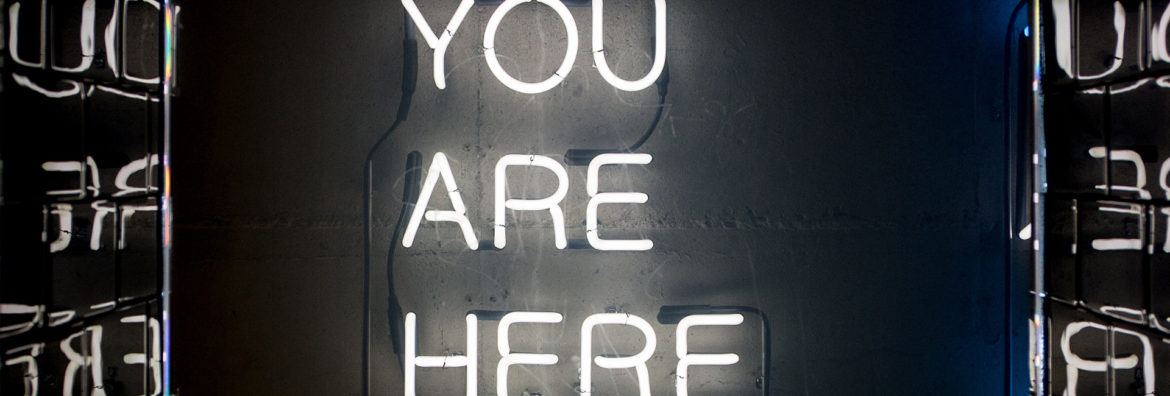Before you spin up surveys, consultants and new initiatives in your organization to transform the culture, each senior leader needs to ask themselves one question:
Is it me?

Before you spin up surveys, consultants and new initiatives in your organization to transform the culture, each senior leader needs to ask themselves one question:
Is it me?

As Winston Churchill once proclaimed, “History is written by the victors.” While this sentiment may hold a bit less weight in today’s society where even the “losers” can shape the collective narrative with the help of things like the internet, the “winners” do tend to hold quite a bit of power over shaping how future generations interpret the events of the past.
One way to shape peoples’ interpretation of the past is to remove and replace the physical artifacts of a people. The statues, monuments, images, the schoolbooks and stories that do not align with the version of history that you wish to promote. Read More…

Leaders serve in many roles. Yes, they must do the mundane but necessary chores of managing assets and balance sheets, but their most important work is to inspire others. And that involves the leader serving as a teacher, as a mentor, and as a coach.
Often we know how to teach others. And we routinely provide mentoring by setting an example and being available to nurture those around us. In my experience in industry, though, I have found the coaching piece to be the most difficult role for leaders to assume.

A few years ago I used a phone app, called Shapr, to expand my social circles, to make new connections, learn new things and enjoy a conversation or two. I met aspiring artists and entrepreneurs who were looking to start a business or were already working on one. They shared their stories and inquired into pro-bono consulting to help them with building their ventures.
In many instances my initial question was, “Where do you want to go with this idea and what are you creating?” Oftentimes, my Shapr’s friends could not clearly respond and this, initially, left me somewhat confused. If I was confused from the start, how would their customers (or potential customers) react?
Compelling vision and mission statements have the ability to provide clarity and direction with regard to why a business exists, what purpose it serves and what value it brings to its stakeholders. Not being able to clearly articulate this can obviously make it difficult to get people on board with your ideas. Read More…

My son turns eleven today. We are all set to celebrate as we always do – our kids love the traditions that come with birthdays, Christmas, Thanksgiving, college football, and too many other events to mention. The house is decorated exactly the same for every birthday. I’m told they love it that way. There will be a special dinner, as always.
All this tradition and consistency got me thinking. My children certainly love new things and surprises: new adventures, trips to unknown places, crazy experiences. And still, for a handful of personal milestones, they seem to want- to need- something familiar and dependable. Certainly, that is to be expected. New experiences bring excitement, anticipation of something unknown, and the possibility of “total awesomeness” (which, I have to imagine, is what the kids are saying nowadays.) Those traditions, the patterns sought out by their own brains, bring them a sense of stability, safety, and comfort. See my recent innovation webinar for more on this. Read More…

How can I communicate better with my team? How can I run a better meeting? How do I make sure my people are “present”?
Try saying “Amen” at the beginning of the meeting, not the end.
We’ve all been there. As people finally straggle into a meeting it inevitably begins to look like the beginning of some prayer session. Heads are bowed, the attendees looking down at their hands, reverently silent. At first, it looks like church – then we see the furrowed brows – and the telltale thumbs and fingers flying. Texts fly into cyberspace and pages on social media are frenetically swept aside.
Everyone is in the room, but many are not “present.”

We often talk about organizational change like inertia. We assume that the plans we put into motion will continue in motion unless they’re otherwise affected by some outside force.
But the truth is, organizational change is more akin to entropy. Even without the influence of outside forces, our processes tend to move toward disorder unless they’re continually and actively managed.
Change is a constant, unrelenting force that we as leaders must navigate every day. So how do we make sure we’re positioning ourselves and our teams to operate in such conditions?

Since 9-11, there have been 156 terrorist attacks on U.S. soil, according to data from newamerica.org. And though our country is safer today due to enhanced security measures, new threats arise every day.
Rapidly evolving technology only underscores this critical need to stay ahead of the curve. Gartner estimates cyber security spending will top $113 billion by 2020, and that number will continue to climb.
But, ‘staying ahead of the curve’ is a big challenge when dealing with safety and security in an unpredictable environment. And few people understand this better than Mike O’Neil, a 22- year veteran of the New York City Police Department and the first Commanding Officer of the NYPD Counterterrorism Division.

Back in my college days at Purdue University, my friends and I were winding down a fairly mundane night of painting the town red. We decided to cap things off with a trip to Taco Bell. Rather than peacefully wait for his burrito, my quite inebriated friend decided to pick a fight with some fellow diners.
This already might seem like a bad idea, but it gets worse: His targets were three offensive linemen from the Purdue football team. It’s important to note this exchange happened during the Drew Brees era at Purdue, so these guys were absolute beasts—all surpassing 6 feet and 300 pounds. Although the only outcome I could see involved a trip to the hospital, my overconfident friend kept trying to take a swing at these powerhouses.
Luckily, cooler heads prevailed. We managed to get our burritos and escape unscathed. My friend clearly had a bad case of hubris, along with an overestimation of my ability to take “the smaller guy.” What I couldn’t foresee was how this near-death experience would serve as an important reference point as I developed my leadership skills.

By Sofia Quintero
I stopped dieting for weight loss purposes 15 years ago. My brain finally understood what I knew all along; diets deplete willpower, make you fat, unhealthy and unhappy.
Instead of dieting, I’ve been doing the obvious — eat what I want, when I want it, in a balanced way. The results are as expected; better health and consistent weight for over a decade. No restrictions, no stress.
There are a lot of things in life that work the same way. Intellectually we understand a wide range of facts and theories; however, it can take decades before we can truly put that knowledge into practice. Why is that? I think there are many reasons. But one powerful reason is our ability to rationalize everything. We convince ourselves that it can’t be that easy.
But, it is.
Business practices are the same; there is a ton of common sense and wisdom around us but we choose to make things complicated, potentially out of fear. After all, it can’t be that easy, right?